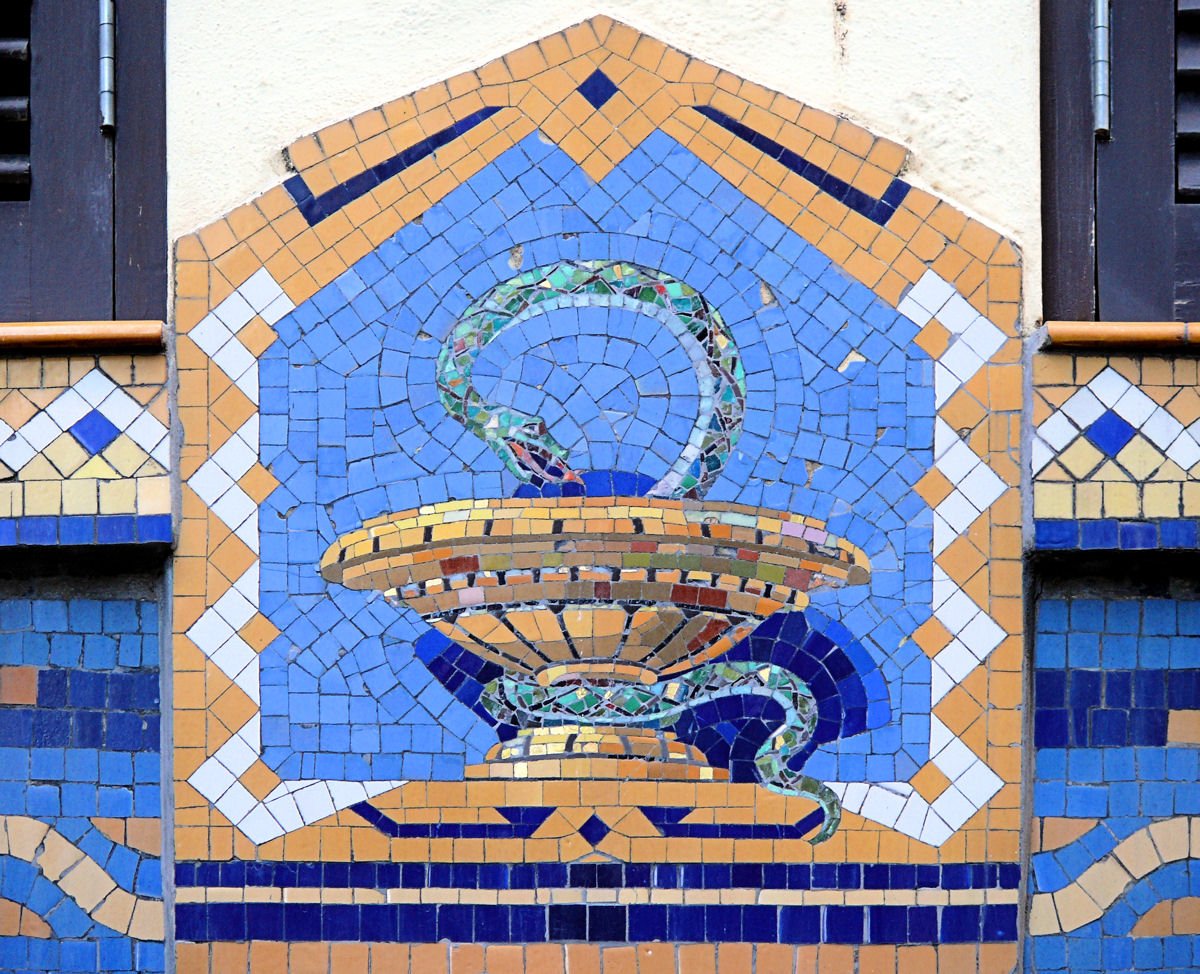#2388. Art Nouveau Decorative Mosaic Panel on Historical Facade
This image showcases a mosaic panel that serves as a decorative element on a building facade. The mosaic is executed in tessera technique (small tiles) and depicts a stylized cup or vase with a winding element resembling a snake or water flow.
The composition is framed in a geometric border with predominant blue, orange, and white tones. The central element—a golden chalice—is set against a vibrant blue background, creating a striking contrast. The framing follows the traditions of decorative Art Nouveau or Art Deco with characteristic geometric ornamentation.
Architecturally, this element is part of a larger facade composition, as evidenced by the framing details at the edges of the image. The mosaic demonstrates high-quality craftsmanship with carefully selected fragments of various colors and textures, creating depth and volume in the image.
Such decorative panels were especially popular in architecture of the late 19th to early 20th century, giving buildings individuality and artistic value. This particular mosaic, judging by its stylistic features, may belong to the Art Nouveau period or early Art Deco, when symbolism and decorative elements were important components of architectural language.
